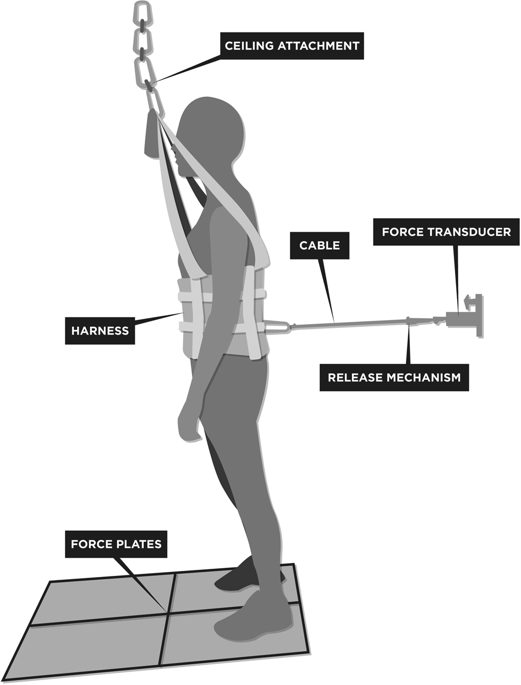当前位置:
X-MOL 学术
›
Spinal Cord
›
论文详情
Our official English website, www.x-mol.net, welcomes your feedback! (Note: you will need to create a separate account there.)
Reactive stepping after a forward fall in people living with incomplete spinal cord injury or disease.
Spinal Cord ( IF 2.2 ) Pub Date : 2019-07-29 , DOI: 10.1038/s41393-019-0332-y Katherine Chan 1 , Jae Woung Lee 1, 2 , Janelle Unger 1, 3 , Jaeeun Yoo 1, 2 , Kei Masani 1, 2 , Kristin E Musselman 1, 3, 4
Spinal Cord ( IF 2.2 ) Pub Date : 2019-07-29 , DOI: 10.1038/s41393-019-0332-y Katherine Chan 1 , Jae Woung Lee 1, 2 , Janelle Unger 1, 3 , Jaeeun Yoo 1, 2 , Kei Masani 1, 2 , Kristin E Musselman 1, 3, 4
Affiliation

|
STUDY DESIGN
Cross sectional.
OBJECTIVES
To compare the reactive stepping ability of individuals living with incomplete spinal cord injury or disease (SCI/D) to that of sex- and age-matched able-bodied adults.
SETTING
A tertiary SCI/D rehabilitation center in Canada.
METHODS
Thirty-three individuals (20 with incomplete SCI/D) participated. Participants assumed a forward lean position in standing whilst 8-12% of their body weight was supported by a horizontal cable at waist height affixed to a rigid structure. The cable was released unexpectedly, simulating a forward fall and eliciting one or more reactive steps. Behavioral responses (i.e., single step versus non-single step) were compared using a Chi-square test. The following temporal parameters of reactive stepping were compared using t-tests: the onset of muscle activation in 12 lower extremity muscles (six per limb) and step-off, step contact and swing time of the stepping leg.
RESULTS
Behavioral responses were significantly different between groups (χ2 = 13.9 and p < 0.01) with participants with incomplete SCI/D showing more non-single step responses (i.e., multi-steps and falls). The onsets of muscle activation were more variable in participants with incomplete SCI/D, but only the stepping tibialis anterior showed a significantly slower onset in this group compared with able-bodied adults (t = -2.11 and p = 0.049). Movement timing of the stepping leg (i.e., step-off, step contact, and swing time) was not significantly different between groups.
CONCLUSIONS
Reactive stepping ability of individuals with incomplete SCI/D is impaired; however, this impairment is not explained by temporal parameters. The findings suggest that reactive stepping should be targeted in the rehabilitation of ambulatory individuals with SCI/D.
中文翻译:

患有不完全脊髓损伤或疾病的人前倾后的反应性踏步。
研究设计横截面。目的比较患有不完全脊髓损伤或疾病(SCI / D)的个体与性别和年龄相匹配的健全成年人的反应性步进能力。在加拿大设立一个第三级SCI / D康复中心。方法33例患者(其中20例SCI / D不完整)参加了研究。参与者在站立时采取前倾姿势,而其体重的8-12%由固定在刚性结构上的腰部高度的水平电缆支撑。电缆意外释放,模拟向前跌落并引发一个或多个反应步骤。使用卡方检验比较行为反应(即,单步与非单步)。使用t检验比较了以下反应性步进的时间参数:下肢12块肌肉(每肢6个)的肌肉激活以及踩踏腿的下垂,步接触和挥杆时间的开始。结果组之间的行为反应显着不同(χ2= 13.9,p <0.01),SCI / D不完全的参与者表现出更多的非单步反应(即多步和跌倒)。与不健全的成年人相比,不完全SCI / D的参与者肌肉激活的发作更具可变性,但只有步进胫骨前部才显示出显着更慢的发作(t = -2.11和p = 0.049)。两组之间的踏脚运动时间(即,下脚,脚步接触和挥杆时间)没有显着差异。结论SCI / D不完全的个体的反应性步伐能力受到损害。然而,这种损害不能由时间参数来解释。研究结果表明,反应性踏步应针对SCI / D卧床患者的康复。
更新日期:2019-11-18
中文翻译:

患有不完全脊髓损伤或疾病的人前倾后的反应性踏步。
研究设计横截面。目的比较患有不完全脊髓损伤或疾病(SCI / D)的个体与性别和年龄相匹配的健全成年人的反应性步进能力。在加拿大设立一个第三级SCI / D康复中心。方法33例患者(其中20例SCI / D不完整)参加了研究。参与者在站立时采取前倾姿势,而其体重的8-12%由固定在刚性结构上的腰部高度的水平电缆支撑。电缆意外释放,模拟向前跌落并引发一个或多个反应步骤。使用卡方检验比较行为反应(即,单步与非单步)。使用t检验比较了以下反应性步进的时间参数:下肢12块肌肉(每肢6个)的肌肉激活以及踩踏腿的下垂,步接触和挥杆时间的开始。结果组之间的行为反应显着不同(χ2= 13.9,p <0.01),SCI / D不完全的参与者表现出更多的非单步反应(即多步和跌倒)。与不健全的成年人相比,不完全SCI / D的参与者肌肉激活的发作更具可变性,但只有步进胫骨前部才显示出显着更慢的发作(t = -2.11和p = 0.049)。两组之间的踏脚运动时间(即,下脚,脚步接触和挥杆时间)没有显着差异。结论SCI / D不完全的个体的反应性步伐能力受到损害。然而,这种损害不能由时间参数来解释。研究结果表明,反应性踏步应针对SCI / D卧床患者的康复。



























 京公网安备 11010802027423号
京公网安备 11010802027423号